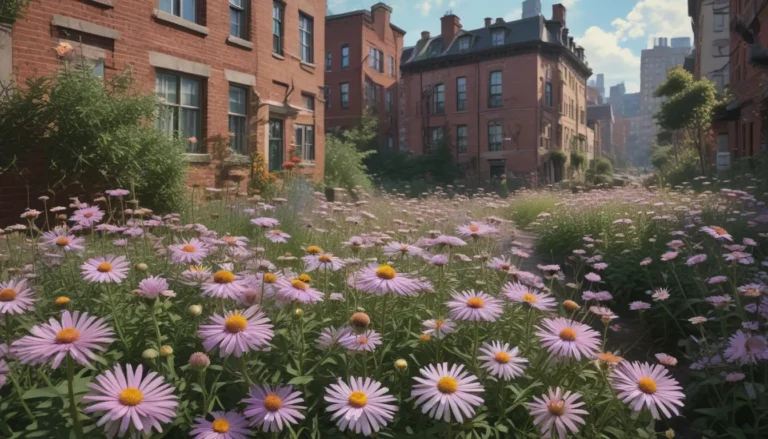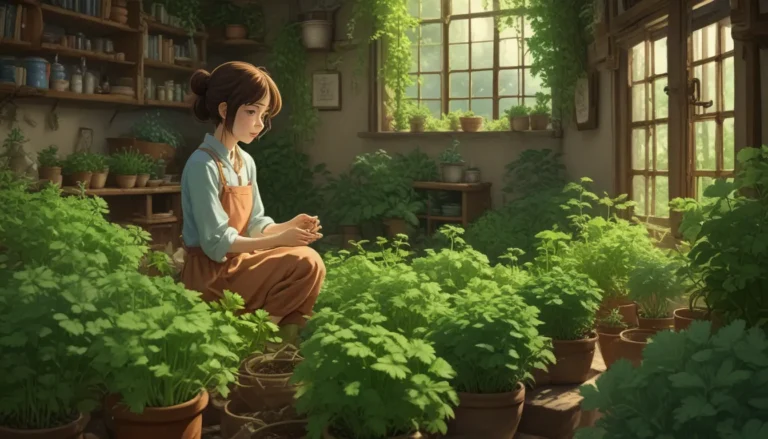How to Grow Chamomile Indoors All Year Long

Chamomile, with its lovely scent and cheerful flowers, is a delightful herb to have in your home. Imagine walking through your kitchen and being able to pop a chamomile flower in your mouth or your drink, anytime you wish.
In this guide, we will explore the joy of growing chamomile indoors, from selecting the right variety, choosing containers, mixing soil, sowing seeds, transplanting seedlings, and providing proper care. Whether you are a seasoned chamomile grower or new to the experience, this comprehensive guide aims to equip you with the knowledge to successfully cultivate this herb indoors.
What You’ll Learn
Before we dive in, here’s a sneak peek of what you can expect to learn:
- Choosing Your Chamomile
- Pick the Best Container
- Mix Your Soil
- Sow Seed
- Transplant Seedlings
- Care Tips
Let’s get started with growing chamomile indoors!
Choosing Your Chamomile
When it comes to growing chamomile indoors, two popular varieties are Roman chamomile (Chamaemelum nobile) and German chamomile (Matricaria recutita). Roman chamomile is more suitable for indoor cultivation due to its compact nature, making it ideal for confined spaces.
If you prefer Roman chamomile, you can find seeds at True Leaf Market. For those who lean towards the German variety, Earthbeat Seeds offers a selection to choose from.
Pick the Best Container
Selecting the right container is crucial for growing chamomile indoors. Opt for a pot that is at least six inches in diameter to accommodate the shallow roots of chamomile plants. Larger pots will yield more flowers, providing a delightful visual display.
Containers with proper drainage are essential to prevent waterlogging. Self-watering pots are convenient for maintaining moisture levels, especially when starting seeds. Consider materials like plastic, metal, terra cotta, or glazed clay based on your preference for weight and aesthetics.
For window settings, a long and narrow self-watering planter like the one from Gardenbasix, available on Amazon, is an excellent choice. Alternatively, an elevated rectangular planter from Tartu adds functionality and style to your indoor herb garden.
Mix Your Soil
While chamomile is forgiving when it comes to soil types, ensuring good drainage is vital for its growth. A mix of standard potting soil with rice hulls (approximately three parts soil to one part rice hulls) provides optimal air circulation and drainage for your chamomile plants.
Consider using FoxFarm’s Ocean Forest Potting Soil Mix for superior plant health. Available on Amazon, this sustainable product has proven to enhance growth quality in various plant species. Rice hulls can be sourced locally or purchased in convenient packages from Arbico Organics.
Sow Seed
Start the magical journey of growing chamomile indoors by sowing seeds in a prepared container. Gently press the seeds into the soil surface, ensuring they are secure without burying them. Moistening the medium with a gentle spray helps seeds establish contact with the soil.
For optimal growth, provide direct sunlight exposure for at least six hours daily. Indoors, maintain moisture levels by using a spray bottle or bottom watering technique. As seedlings emerge, thin them out to allow adequate space for growth in the container.
Transplant Seedlings
If you prefer to start with chamomile seedlings, transplant them into larger pots with a well-draining soil mix. Keep the soil level consistent with the original container, ensuring proper moisture levels after transplanting. Position the pot in a sunny location with regular watering to support healthy growth.
Care Tips
Chamomile is relatively easy to care for indoors, requiring full sunlight to promote flower production. Supplemental lighting is recommended if natural light is insufficient, enabling a diverse range of plants to thrive indoors. Consider using fixtures like the Barnyard Pendant LED Grow Light or Oslo LED Grow Light for effective plant growth.
Maintain consistent moisture levels and provide periodic feeding with a mild, all-purpose fertilizer every three months. Harvest chamomile flowers and leaves as needed, ensuring not to exceed two-thirds of the plant volume. Repot or divide plants to promote healthy growth and rejuvenate older plants when necessary.
Conclusion
By following these tips, you can successfully grow chamomile indoors all year round. Embrace the calming influence of chamomile in your home and enjoy the convenience of having this delightful herb at your fingertips. Share your indoor chamomile gardening experiences in the comments below and explore additional guides on chamomile cultivation for more insights.
Let the soothing aroma of chamomile enrich your indoor herb garden year after year!





